“They sent forth men to battle, But no such men return; And home, to claim their welcome, Come ashes in an urn.”
― Aeschylus, Agamemnon
As an avid fan and spectator of New York‘s preeminent immersive theatre experience, Sleep No More, when I heard Punchdrunk had a new show in London, I leapt at the opportunity to see the show. The Burnt City is a story of dazzling and haunting story gods and mortals set in a mythical underworld. The overall story takes inspiration from Greek mythology and is set during the Fall of Troy. But this isn’t the fall of Troy you remember, but another take on the classic tale. It is an experience that sends you through dreams and nightmares and suspends, if just for a few hours, your sense of reality and opens your mind wide. So dive in because this is going to be an intense ride…
I’ve read many articles that tell you not to get bogged down in decoding the plot or trying to understand what is happening in The Burnt City. Most of the story’s plotlines are told through interpretive dance scenes. But let’s face it; humans look for meaning in what we see. And I truly believe that by knowing a little more about the characters and overall themes, we can better develop different interpretations of the show as audience members.
My Sleep No More guide has proven extremely helpful for viewers before and after the show. And I wanted to ensure I gave the Burnt City the same treatment! If you’re curious and want clues about how to make the most of your experience, read on. But be warned, this guide contains spoilers! There is also a spoiler-free version of this guide if you want to be prepared but want the show’s details left a secret to uncover. Choose your fate!
- What is the Burnt City?
- What is Immersive Theatre?
- How Much Are Tickets to See the Burnt City
- How to Get to the Burnt City?
- Arrival
- About the Theatre Masks
- Accessibility
- What to Wear
- How to Experience the Show?
- 1:1s
- The Setting of the Burnt City
- Entering the World of the Burnt City
- The Story of the Burnt City & its Characters
- Peep Bar
- Who to Follow?

What is the Burnt City?
The Burnt City is the newest production from the award-winning theatre company Punchdrunk. The show is an immersive theatre performance that blends contemporary dance and dramatic performances with classical texts. The production occurs inside One Cartridge Place; two enormous warehouses in Woolwich, outside central London. Set inside these warehouses, the company has transformed these once-abandoned buildings into a state-of-the-art theatrical venue. One that uses new technologies to create a cinematic walkthrough of their site-specific sets where you can explore to your heart’s content the world of the Burnt City.
The show has little to know spoken dialogue, and instead, the story is told through modern dance and the powerful yet silent performances of the actors in the show. The lack of words makes the show more of a work of art than a play, allowing viewers to come away with their own interpretation of some scenes and events.
What is Immersive Theatre?
Immersive theatre is a form of performance art that places the audience at the center of the performance. Blurring the boundaries between performer and spectator. In an immersive theatre experience, the audience is not just a passive observer but an active participant in the performance. Unlike traditional theatre, where the action occurs on a stage, and the audience watches from their seats, Punchdrunk demands their viewers to follow the story. You can explore the over 100,00 square feet inside the theatre, discovering secrets and various characters as you go. Pursue whatever grabs your attention. Somewhat of a “chose your own adventure” model of performance art.
The show itself is three hours long, but the story repeats three times throughout the night. Resulting in 3 hour long “loops”. Each actor follows a distinct loop, with multiple storylines happening simultaneously. This means you can see an entire loop following one character. Then choose another to follow for the next hour, seeing how the characters interact or intersect between the various loops.
How Much Are Tickets to See the Burnt City
You can buy three different types of tickets directly from the Punchdrunk website; Standard, Premium and VIP. A key piece of information to understand when buying these tickets is they each come with a different “entry time slot.” As mentioned above, there are three loops to view the show; the later you arrive, the less of the first loop you will be privy to. The show starts at 7 pm (or 2 pm when they have matinees.)
Ticket Levels & Distinctions
Standard tickets starts at £45. The earliest time slots tend to be priced slightly higher, and the tickets get cheaper later in the evening. The latest timed entry ticket is 40 minutes after the first loop begins. No matter which ticket you buy, you will always still get to see at least two full loops (aka 2+ hours) of the show no matter when you arrive.
Premium tickets start at £95. These tickets have more availability for early time slots. You also get inside faster with priority entry, which enables you to jump the queue on arrival. With these tickets, you can arrive at 6:30 pm (30 minutes before the start of the show) to go inside and enjoy time at the Peep Bar. The Peep Bar is a part of the show itself, but more on that later. With a premium ticket, you’ll also receive a complimentary coat check and a glass of Da Luca Prosecco.
The last ticket level is the VIP Tickets which start at £135. You get all the same advantages as the premium tickets but receive a secret prelude scene which is exclusive to VIPs. You also get a cocktail included at the bar and get a collectible VIP gift. Truly, I think these tickets are only for die-hard fans looking for that exclusive scene. If you’re a first-timer (and are mega-rich) I think you can give it a skip.
Discounted Tickets
If even the standard tickets sound expensive, well, they are. But there are some discount options available. The Ticket Lottery opens weekly every Thursday, with the draws taking place the following Wednesdays. Tickets are bookable for the week ahead and available in pairs. These tickets are £25 per person. But the arrival times are subject to availability.
Today Tix also offers daily discounted tickets through their app. These tickets are between £35-55, but they are set at the 7:20 pm entry time. Honestly, this is the best option available. Twenty minutes is worth the savings. These were the tickets I bought for the shows when I was in London and I never found I missed anything I couldn’t see again during another loop.
How to Get to the Burnt City?
The Burnt City is located in the neighbourhood of Woolwich, in One Cartridge Place, a two-minute walk from Woolwich station. The new Elizabeth Line stops at Woolwich station, making the journey on the tube all the easier from central London. It only takes about 30 minutes using the Elizabeth line. You can also access the theatre by taking the Thameslink train to Woolwich Arsenal Station, a six-minute walk to One Cartridge Place. From central London, this journey option takes around 50 minutes. But all will depend on where you’re departing from. Be sure to plan your journey in advance to avoid delays since timing at the show is key.
If you are driving, you can use the Woolwich Arsenal Train Station parking lot. From there, it is only an eight-minute walk to the theatre.
Arrival
Please do not arrive more than 15 minutes before your scheduled time slot. They are getting pretty strict about this. But I’d arrive exactly 15 minutes before so you can ensure you get in as soon as possible And be advised they cannot guarantee access to latecomers. Once inside, you’ll need to go through security, get your ticket scanned, coat check and phone lock up. That’s where you are going to spend those extra 15 minutes.
Covid Regulations
As of March 2023, all audiences are still required to wear a Covid mask. If you do not have a mask with you, they will provide one to you upon entry. These are separate from the theatre masks you also need to wear. More on that below.
Coat Check
Since you want unencumbered throughout the show, you must check any bags or large purses before entering the theatre. Although you aren’t required to check your coat, it is HIGHLY recommended.
Coat check is complimentary for VIP and Premium ticket holders and but for the rest, it costs £2 per item. I brought a large, reusable bag with me that I stuffed my coat and purse into to save paying £2 on each of the two items. Small savings, but easy enough to do.
You are also not allowed to bring your phone into the theatre. They are very strict about this. If you don’t want to leave your phone in your checked bag, you have the option of placing your phone into a special lockable pouch. This pouch comes with a strap so you can carry it around with you. The pouch was very comfortable, and I loved being able to explore hands-free with ease.
About the Theatre Masks
In addition to the covid medical mask, all guests are required to wear a theatrical mask throughout the entire experience. The main reason for this is to distinguish the audience from the actors. This mask design is a replica of old Venetian Bauta masks. These Venetian Carnival masks hid the wearer’s identity during the tawdry events of carnival. With secret identities, rich aristocrats could partake in some otherwise frowned-upon activities. While wearing a mask might seem odd, the show aims to make you feel like a voyeur peeking in on the actors. Sporting a disguise allows you to feel braver and perhaps let your guard down. You might feel less inhibited and even step out of your comfort zone…
If you wear glasses, the mask may not fit over the top of them. I know the newer masks in London have additional padding that helps glasses wearers, but it may still prove difficult. If you can get or wear contacts, this might be the best way to fully enjoy the experience.
Accessibility
I was surprised to find upon researching that Burnt City is indeed wheelchair accessible, with only some areas inaccessible with electric chairs. If you have access requirements, including using a wheelchair, you must book an Access Ticket via Punchdrunk directly. You will also be able to book a complimentary Essential Companion ticket. You will need to use the lifts to access the two levels of the show. But there are lifts available.
Content Warnings
The show is restricted 16+, with anyone under 18 required to be accompanied by a responsible guardian. The Box Office will issue a lanyard which they must wear during their visit to be identified to performers and staff. There is a bar that features as part of the performance, which those under 18s can only visit in the company of their parent or guardian.
The reason for this age restriction? Not only is there plenty of distressing scenes with blood, murder, suicide and sex, but also PLENTY of nudity. Also, be aware there are many dark spaces, loud noises, strobe light, and smoke effects throughout the show.
What to Wear
What you wear to see the show is super important. The most critical of which is your choice of footwear! Since the night can be as long as three hours, you want to wear comfortable shoes. I saw so many people there wearing high heels, and by the end of the evening, they were leaning on walls and looked more exhausted than excited. If you are interested in following one character’s storyline, sometimes this requires you literally sprint after them to ensure they don’t get away and you miss their next scene. Without good shoes, you can’t chase after them.
The warehouse of the Burnt City is VERY HOT. So even in the colder months, I would advise wearing a light, breathable outfit. Since you have to coat check anyways, you can always wear something warmer there and leave those extra layers at the coat check. Also, be warned you might get some fake blood on your clothes. This will only happen if you interact with the characters, but it can happen. Don’t worry, though; it washes right out. But some people might not want to change it and choose not to wear their best shoes.
Another thing that is strange but is a MUST is a wristwatch! Since you won’t have your phone to tell the time, a watch will help you gauge how long you have been inside. Or when the first or second loop of the show might end. While getting lost is part of the experience, if you want to get the most out of it, having a watch to tell the time might help you.
How to Experience the Show?
There is no wrong or right way to experience the Burnt City. In a way, the show commands that you leave your inhibitions behind and lose yourself in the performance. But, if you want to create a more cohesive experience, you might follow one character for a whole loop. To learn their story and see how it fits into the overall narrative.
Other viewers will want to immerse themselves in the atmosphere and simply explore the environment, sets and details to uncover hidden clues about the storyline. In the Burnt City there are clues everywhere revealing your presence in the underworld, so you can absolutely hunt for those!
The choices are unless and that makes the experience completely unique every time you go! The biggest piece of advice I have is to leave anyone you come with behind. Leaver them in the literal dirt. Explore the world on your own. It’s a choose your own adventure, after all, not choose someone elses. Plus, talking with your friends about what they saw and experienced after the show is one of my favourite parts. Nothing like a good debrief!
1:1s
If you’ve done even a little bit of reading on Punchdrunk’s productions, you’ll hear over and over again the mention of something called a 1:1. So what is it? The 1:1s are when an actor pulls a random audience member aside and brings them into a private room for a VERY intimate scene that only those two people share. This often involves removing your theatre mask so the performer can get up close and personal and connect with you.
Often the 1:1s are the only part of the play where you might hear the actor’s voice! They are few and far between, so if you get selected, consider yourself very lucky indeed. If you don’t want to interact that closely with them, the actors are very good at respecting if you pull away. But if you are super shy, stay in the back of the groups that follow the actors around so you won’t get picked.
On the other hand, if you want a more intimate experience, go to the front and get close up. But remember always to give the actors their personal space. You can’t touch them unless invited. And some scenes explode with intense movements, and you’ll want to stand back to observe these performances. It’s important to respect everyone’s boundaries, that includes other audience members. Don’t push someone out of the way just to get ahead, the actors will notice, and that isn’t the kind of attitude that will get you a 1:1. And, of course, don’t be a creep.
The Black Masks
Various employees wear black masks during the show. These black masks as security guards protecting the actors, securing the sets and keeping the audience from entering any off-limit areas. If you are using your phone or talking too loudly, they will step in to warn or remove you from the show. They are also there to give you directions if you are lost or need to find a washroom. But they won’t give away any secrets…
The Setting of the Burnt City
The Burnt City is a true tale of two cities, an apt comparison since the show was written just to be performed here in Charles Dicken’s London. And the city where Punchdrunk first originated and put on its first show. When you enter One Cartridge Place, you are stepping into an underworld representing the imagined ancient city of Mycenae (modern-day Greece) and Troy‘s pulsating neon back streets. The two cities occupy one of the two connecting warehouses converted for the Burnt City. Despite being inspired by Greek tragedies, the show is set in a dystopian future, inspired by films like Blade Runner and Metropolis.
Entering the World of the Burnt City
Once you are through the coat check, you are given a playing card upon entering the Peep Bar. You wait here until your card number is called. Only then can you enter the world of the Burnt City. After your number is called, you’ll be led through a series of museum galleries containing glass cases preserving various artifacts from a fictional 19th-century excavation of Trojan ruins. Each one contains a small excerpt of the story we are about to see performed and the main characters therein.
Reading all the little details can be overwhelming when you just want to get into the show, but not to worry. This guide covers all that information (and MORE), so you’ll have come prepared. The last glass case of the exhibit is smashed. And the object inside is missing. As if something has been stolen or unleashed… And it is at this moment that you are given the choice of two doors to enter through, one leading to Mycenea, the other to Troy.
Mycenae
Mycenae is the smaller of the two buildings, but many of the biggest scenes occur here, including the grand finale. Entering Mycenae is like walking into a post-war abandoned city. Aged and tattered army tents lead your way into the city. Once through the tents, you walk into an enormous room. In the center is a burnt-out anti-tank hedgehog made of rusty steel beams. A memory of wars long past, whose violent history still scars the land. Not only does this make for a dramatic set piece, but it also provides a piece of gorgeous equipment for the actors to dance on.
Behind the old warzone is the Hinterland. A small, wooded area covered in sand, with antlers spread across the floor and a giant shrine to the god Artemis looming in the darkness. On the far side of the lower level is a caged checkpoint, often occupied by guards and soldiers in green coats. Through this checkpoint is a large set of double doors, which will take you to Troy…
But also dominating the central portion of Mycenae is a large staircase leading up to a gallery that allows actors and audience alike to look down on the room below. This upper level is the old Greecian palace. It serves as the banquet hall and includes a small bedroom and shower stall. There is no way to get from Mycenae to Troy on the second floor, so keep that in mind.
Troy
While Mycenea feels like an ancient war zone, Troy feels like a throbbing Berlin nightclub. Or a night out on the streets of neon-laden Tokyo. Glowing signs dominate the town square, and retro arcade games are found in hidden alleys ways. Somewhere in the distance, the thumping beats of a techno club echo. The town square is surrounded by a cafe, a pottery studio, a department store, Hades’ office and an old well. If you are in the town square during the start of the second loop, you’re in for a pleasant surprise around this well…
From the town square, dimly lit alleyways spread off in all different directions. Leading you to the Bistro, Sake Bar, a seedy hotel, a series of tenement rooms and a secondary, smaller town square home to a neon-lit catholic shrine. There are several staircases around the lower level of Troy which will take up upstairs, where you’ll find the nightclub, a grandiose office inspired by the Godfather, a series of Love Hotel bedrooms, a greenhouse and more tenement apartments.
If you’re a classics nerd, you’ll love some of the hidden details found in the tenement apartments. Each one was inspired by a different character or story from Greek mythology. There are references to the Danaides, Sisyphus, Cronos, Salmoneus, and even the myth of the Cyclops. Many people come to see the Burtn City to simply explore the hidden clues in the sets, and despite these rooms being reasonably devoid of the main action, they are a great place to investigate quietly.
The Story of the Burnt City & its Characters
Two main Greek tragedies inspired the intertwining storylines inside the Burnt City. The first is Aeschylus’ Agamemnon, and the second is Euripides’ Hecuba. The main plot points from Agamemnon primarily occur in Mycenae, and the characters from Hecuba centre around Troy. But elements from either story intertwine and connect each city’s fate to each other. But more than just a connection between location and character, these stories revolve around the theme of grief and the tragedies that befall both the victor and victim after war.
Also connecting both stories together is the presence of the Gods. The Greeks and Trojans believed that their fate lay in the hands of the Gods, who also controlled their destiny. The gods wear these dramatically sculpted breastplates. As if they are marble statues come to life. The gods also work with various citizens of Troy as intermediaries between the gods and the main characters. These characters blur the lines between the realm of the gods and the mortal plane. Delivering messages, conveying prophecies, and dreaming of metamorphosis.
The outline, as detailed below, combines the original Greek tragedies and the interpretations you see of them in the Burnt City. Major spoiler warnings ahead!
Aeschylus’ Agamemnon
Aeschylus’s Agamemnon is a tragedy that tells the story of the Greek king Agamemnon. Agamemnon’s army was facing a devastating end. On their way to Troy, his entire fleet of ships was met with fierce winds on the seas and were stuck in a purgatorial loop. The ships attempt to push ahead but always move nowhere. As the show’s loop begins, we find these soldiers slowly being driven mad by that eternal waiting.
The Slaughter of Iphigenia
Agamemnon prayed to the God Artemis, needing a miracle to save his men and his fleet. Artemis told Agamemnon that if he sacrificed his young daughter Iphigenia, the gods would let the fleet cross the seas. Iphigenia was set to wed Agamemnon’s second-in-command, Neoptolemus, but the wedding was only a ruse. Right after the ceremony, still in her wedding dress, Iphigenia is killed by her father in the centre of Mycenea for all to see. Right before the eyes of her beloved mother, Clytemnestra, who watches helplessly from above.
Artemis’ Transformation
In disbelief that Agamemnon could commit such a heinous act, Artemis is devastated by this bloodbath. But Artemis must keep the pack she made with Agamemnon and sends the good winds to help his army take the city of Troy. But Artemis is shamed by her actions, and trying to do right, takes Iphigenia into the Hinterlands. There, Artemis surrounds Iphigenia in antlers (a symbol of the goddess of the hunt and wild animals) and transforms her into an immortal priestess in the form of a great bear. In ancient Greece, a ritual service known as the arkteia (“arktos” = bear) is usually interpreted as a rite of passage preparing the girls for puberty and marriage.
Clytemnestra’s Revenge
After the death of her daughter, Clytemnestra is overwhelmed with grief. With her husband at war in Troy, Clytemnestra takes a lover, Aegisthus. Aegisthus comforts Clytemnestra, and they horrifically devour a platter of bloody entrails together. In the ancient world, eating entrails meant seeing into the future. They see the king’s death through this prophetic meal and plot revenge. Aegisthus disguises himself as a masseuse wearing a haunting androgynous mask to fool Agamemnon when he returns.
When Agamemnon returns from Troy, he is initially met by his loving wife, who pretends to welcome her adoring husband. Only to lure him back into an intimate love scene with the disguised Aegisthus in their palace throne room. They begin by poisoning him with a lotus flower tincture, and he begins his descent into madness. But poison isn’t violent enough for Clytemnestra, who seeks vengeance for their daughter Iphigenia’s sacrifice. She stabs and kills Agamemnon at his most vulnerable. As he lies dying, his daughter Iphigenia greets Agamemnon as he enters immortality, and they start the loop over once more.
This story explores themes of justice and revenge. But moreover, the power of grief and the ceaseless love of a mother.
Euripides’ Hecuba
The second storyline, which is happening simultaneously, is Euripides’ Hecuba. Euripides’ Hecuba is a tragedy that follows the titular character, Hecuba, after the fall of Troy. Hecuba, once the queen of Troy, has been taken captive by the Greeks and is now a slave.
When we enter the world of the Burnt City, Troy has yet to fall. Agamemnon is still on his way. Hecuba has a prophetic vision about the death of her youngest son Polydorus. She entrusts her youngest son to her neighbour and supposed ally, Polymestor, to keep him safe. She also intrusts Polydorus with the family jewels. As they do so, the army of Myceneans arrives.
The Fall of Troy & the death of Polyxen
As Agamemnon, alongside his men, enter the city, Troy has fallen to the Greeks. Since it took the sacrifice of his daughter Iphigenia to take Troy, Agamemnon requires a similar sacrifice of Hecuba and the death of her youngest daughter Polyxen. But Polyxen will not become a victim of this war and opts to kill herself rather than be taken prisoner and murdered by the enemy. She slits her throat and is hung up in the town square for all to see. Including her lover, Macaria. After Polyxena’s death is propelled into a grief-stricken ritual before gathering the strength for revenge.
Polydorus & Polymestor
Grief-stricken at witnessing her daughter’s death, Hecuba staggers through the streets of Troy in search of Polydorus. Polydorus was supposed to be in the care of Polymestor, the club owner and somewhat kingpin of Troy. But Polymestor has no intention of saving Polydorus. Once Troy falls, Polymestor lures Polydorus into his menacing office, where they play fight, and Polymestor feeds the young boy some drugs to weaken and kill him.
A golden icon of a half man half bull is always looking over the office. This is the god Moloch, who is associated with child sacrifice. And that is precisely what Polymestor does; he kills young Polydorus as a sacrifice to the gods. He is rewarded by taking the precious jewels once belonging to Polydorus. Then he stuffs the body of Poludorus into a trunk and has it carted away. But Polydorus awakes in this underworld of living death and is transformed into a fury who stalks the city in search of revenge.
Apollo and Cassandra
Cassandra is Hecuba’s only living daughter, and she is possessed by the power of prophecy. The “gift” was given to her by the God Apollo, who was entranced by her beauty. He gave her this gift to win her love but was subsequently rejected. Apollo was furious and turned the gift into a curse, as no one would ever believe her prophesies. After her sister’s death, Cassandra is given to Agamemnon as a gift from Troy. Cassandra can see the fate of Agamemnon; if he returns home, he will be murdered. She tells him this prophecy, knowing she will not be believed. She lures Agamemnon back to Greece, where he meets his death at the hands of Clytemnestra.
Hecuba’s Revenge
Hecuba finds her son’s dead body and slowly begins to lose her mind. All her children were dying and lost all around her. Being betrayed by almost everyone, Hecuba turns to the gods for revenge. She stalks Polymestor, and with the help of the spirits, Polymestor is lured into a ritualistic dance. Hecuba has tricked him into this trap and blinds him when the dance reaches its feverish peak. Hecuba has finally succeeded in getting the revenge she so desired. But she stands hopeless, and even revenge cannot soothe the pain of grief. She wanders off to pray, and the loop starts once more.
Hecuba explores themes of revenge and justice. But primarily studies the horrors that befall women after the war. And the sacrifices a mother must make to seek vengeance for her family.
Hades and Persephone
Watching all of this take place are the gods Hades and Persephone, King and Queen of the Underworld. The myth of Hades and Persephone is one of the most well-known stories from Greek mythology. It tells the tale of how Hades abducted Persephone, the daughter of the goddess Demeter. He stole her away and took her down to the underworld to be his wife. Hades offered Persophone a blood-red pomegranate; unknowingly, she ate six seeds from the forbidden fruit.
Demeter, Persephone’s mother, was devastated by her daughter’s disappearance. She asked Zeus to intervene and had him broker a deal. Because Persephone had eaten six seeds, Zeus decreed that Persephone would six months of the year with Hades in the underworld and the rest of the year with Demeter on earth. This is where we get the changing of the seasons. The barren winter months represent when Persephone is in the underworld, and the fertile spring and summer months represent her joyous reunion on earth with her mother.
The cycle of life and death
The myth of Hades and Persephone has been interpreted in many different ways, but it is often seen as a metaphor for the cycle of life and death. The entire show is a continuous loop of life and death, neverending.
The Grand Finale
The final scene takes place in Mycenea and is a living embodiment of the Flemish painting, the Fall of the Damned, by Dirk Bouts, painted in 1470. A copy of this painting can be found on the wall of Hades’ office, cementing the idea that Hades himself has trapped us and the characters here. The loops we are watching are a form of purgatory. And the characters perform for us as we weigh in on the guilty and the innocent watching this last judgment.
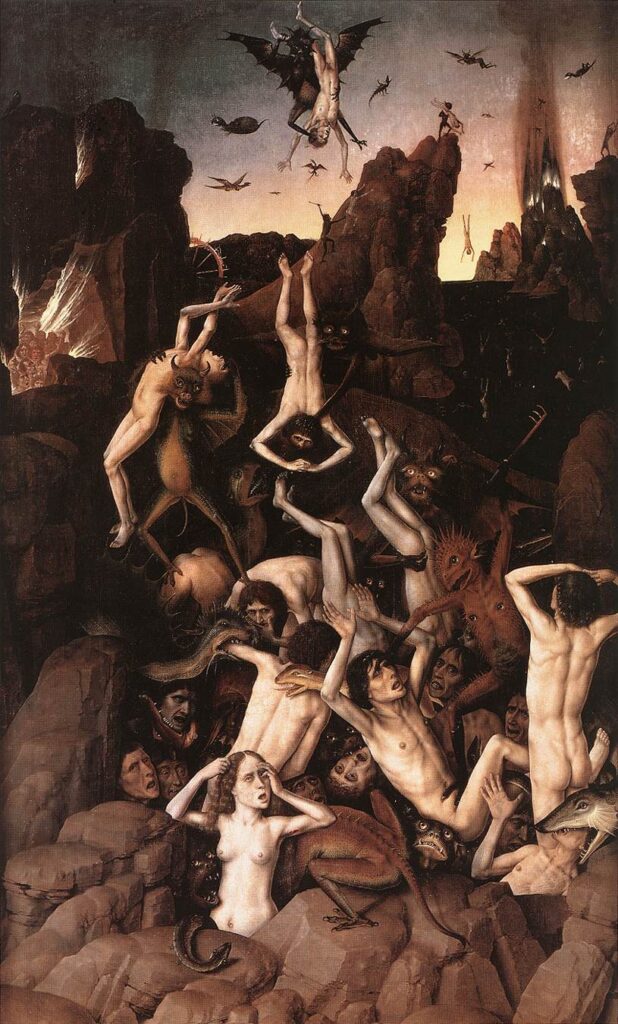
Additional Characters
While these two central storylines cover the main characters, a dozen or so side characters make up the rich tapestry of the story of the Burnt City. This includes lovers, other gods, tricksters and more, all with unique and rich narratives. All worth exploring and learning more about for yourself. Since these characters’ stories aren’t based on a pre-existing narrative, they can be a little looser and require more interpretation from the viewer.
Peep Bar
The Peep Bar is where you wait upon entering the theatre, but it also can be reentered through a doorway in the backstreets of Troy. The Peep Bar remains open after the performance (except during matinees.) Often, bands play here, so it’s a lively spot to continue the night with your friends and talk about the show!
Unlike the bar in Sleep no More, which is primarily a place to come, take off your mask, and unwind if you find the show a bit overwhelming, the Peep Bar is also a part of the show itself! Various characters come into the bar to perform a series of dances, and some even might treat you to a song or two! While I wouldn’t recommend spending an entire loop in the bar, if you follow a character and end up here, it’s worth seeing what happens.
Who to Follow?
The question of who to follow is difficult, and I think people will often simply tell you to follow what sparks your curiosity. And while that is good advice, if you’re reading this blog and came in search of guidance, you might be looking for something more informative than that.
My personal and admittedly biased advice? Follow a key/main character from Mycenea for the first loop. Someone like Agamemnon, Clytemnestra, and Iphegina. They will help you piece together the more concrete aspects of that story. For the second loop, follow someone who will take you through the neon streets of Troy, like Polymestor (who has an especially heartbreaking storyline) or Hecuba. And finally, follow a God or other interesting side character for the last loop. Characters like Hades, Kronos and Ascalaphus are all immensely fascinating.
But honestly, if someone interests you or if you want to know more about anything you see, follow that path without question or hesitation. Exploring is all the fun, and with the knowledge from this post, you’ll already be set to discover the meaning behind so many discoveries inside.
If you had the pleasure of seeing the Burnt City and came here looking for answers, I hope you found this guide helpful! If you are seeing it for the first time, I hope you use this as a companion to the show itself. There is so much more to discover by uncovering the layers of this incredibly immersive experience.
Happy Travels, Adventurers!
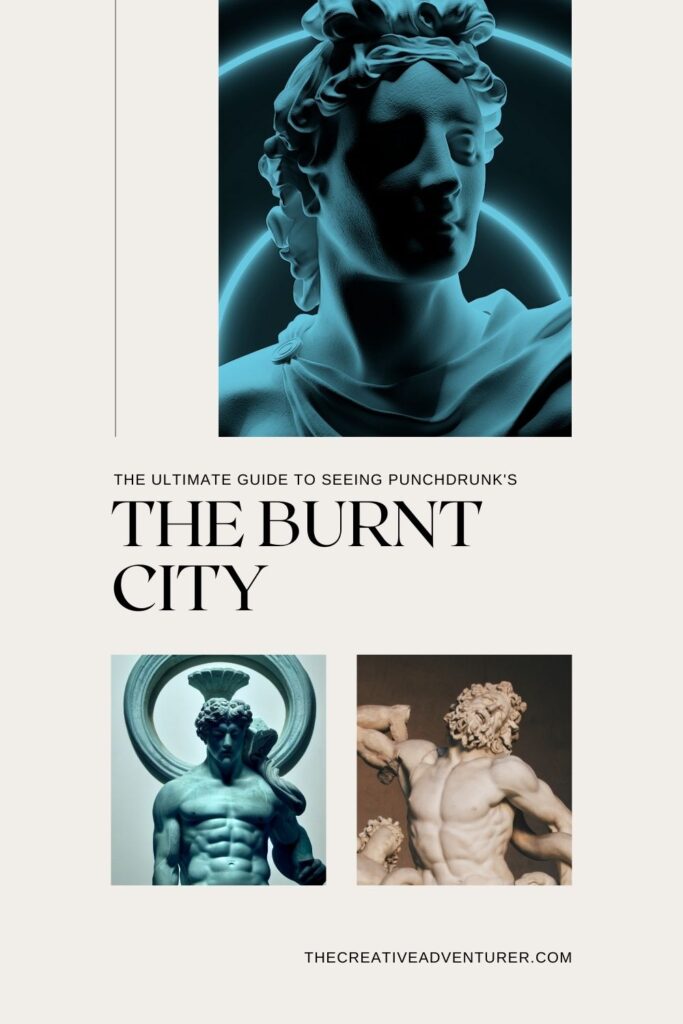
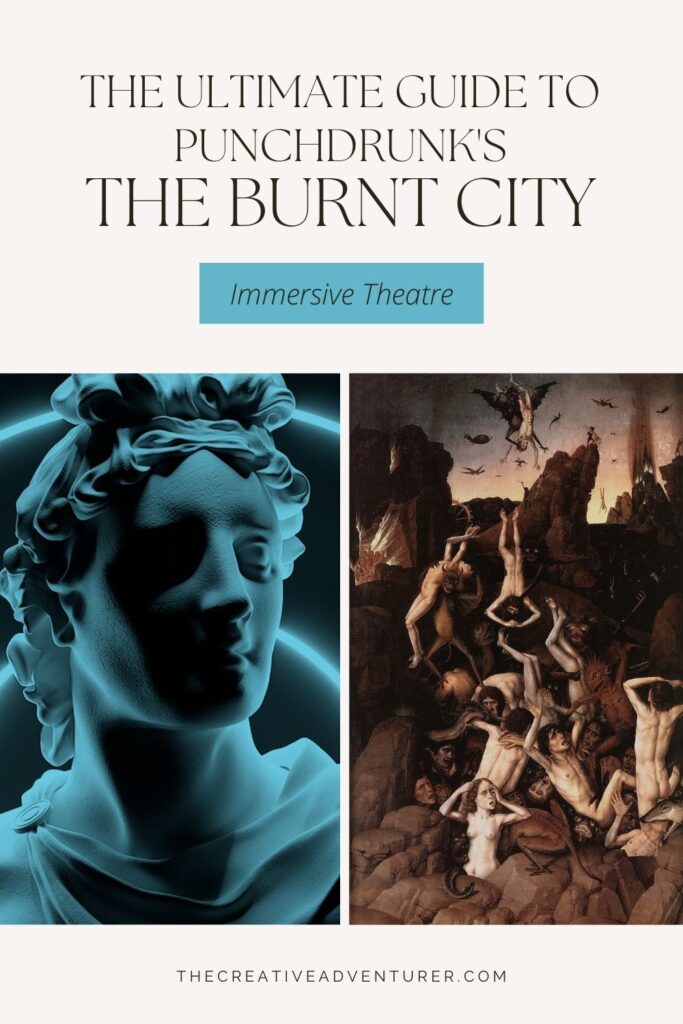
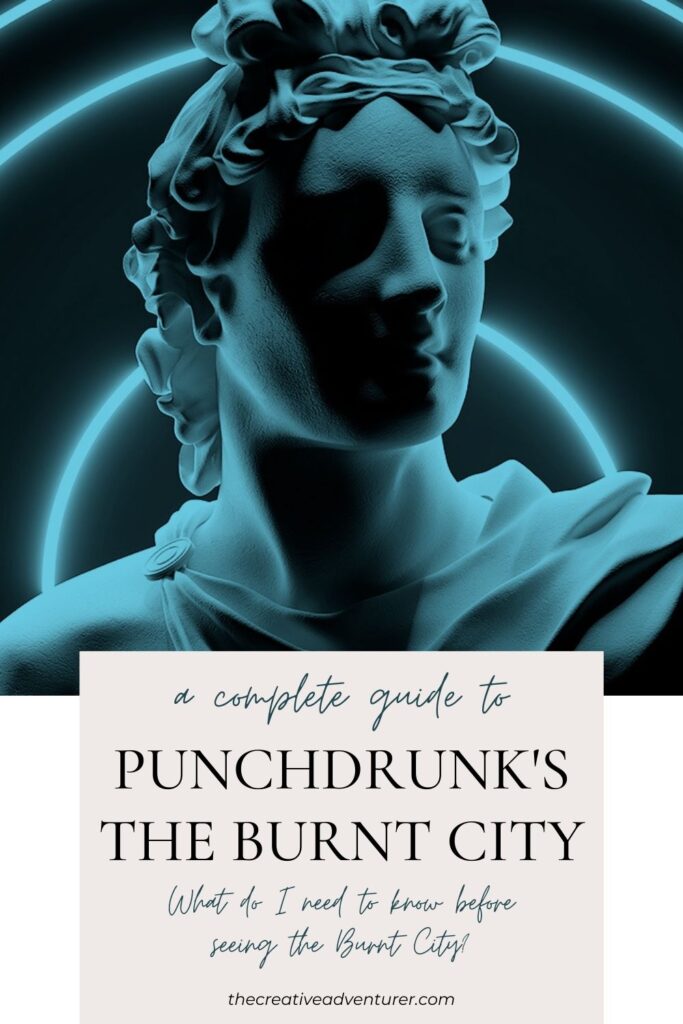
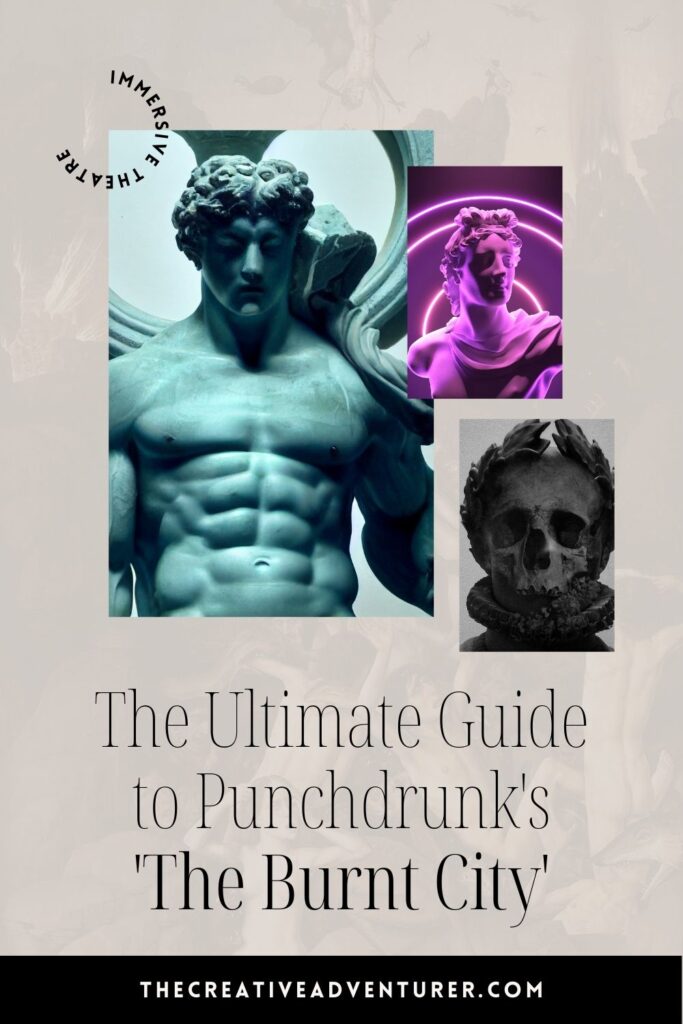



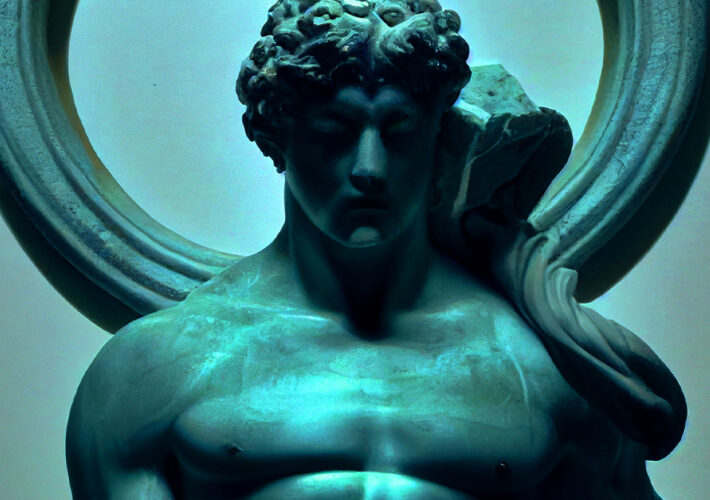

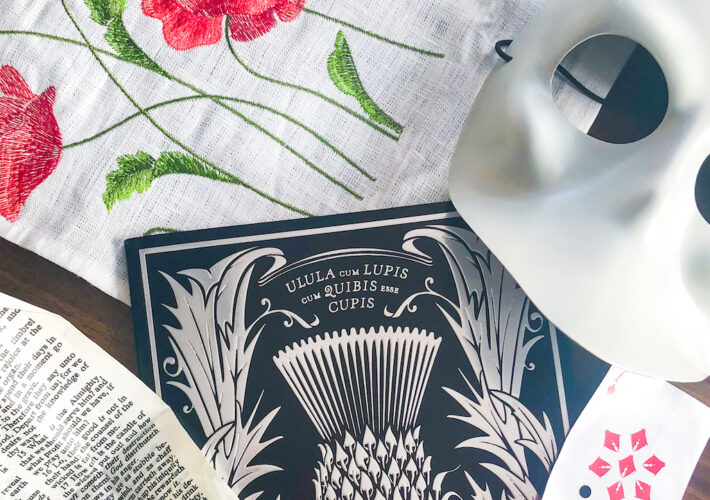
8 COMMENTS
Si
1 year agoA great read after seeing the show. Great show..so many questions. Wonderful to be so intrigued I’m searching online! Thank you
Si
1 year agoA great read after seeing the show. Great show..so many questions. Wonderful to be so intrigued I’m searching online! Thank you
Andrew
1 year agoI enjoyed it immensely. It is highly sensory and the ability to wander all over a limitless set and dive into the hidden corners, and pick up maps and diaries and find them all related to the siege of Troy was amazing. The atmosphere and moody music were incredible.
But apart from the Agamemnon story, I didn’t understand the other loops described here until I read this, even though I know the basics of Greek mythology pretty well, e.g. the Iliad and the Odyssey. I wish I had read Hecuba by Euripides and Agamemnon by Aeschylus (both available as free downloads, btw, on Gutenberg.com).
I now think it is essential to know the stories before you go. Since it is mime, and since no actors wear identifiers, you can’t otherwise work out where you are in a loop and when they begin and end unless you know the narratives. I deliberately didn’t because I was afraid of spoilers. You should do the opposite, in fact. I was also told it would last up to three hours, but it lasted two. I would have missed the grand finale if I had not thought there was still an hour to go, wanted a drink at the bar, and the bar staff told me I would miss it if I didn’t go now. I say these things only because I think they would improve the audience experience for what’s already an arresting and extraordinary production. I would gladly go again, if it were on for longer (I went on 3 August and it closes 24 September) and look forward to Punchdrunk doing another show.
The Creative Adventurer
1 year ago AUTHORThanks for your amazing comment Andrew! I’m so glad you enjoyed yourself and you found my post helpful in unpacking some of the things you saw. I’m hopeful more people are able to read this as a primer before they go because I do think a better understanding helps improve the overall experience. Their FAQ on the site still lists the show as being three hours long, but that is only if you get the first entry time into the theatre. Late entry times mean you don’t have as much time inside. It could have been all the first entry tickets were sold out when you bought your tickets. I know availability is very limited currently as they show is approaching a possible end. Thanks so much for the tip about the free books on Gutenberg, I will update the post to include this as well
Ruth
1 year agoHaving just been to see this twice, in the company of people who have been multiple times. my understanding of the 2hr vs 3hr thing is that in hot weather, for everyone’s comfort and safety, the show loses its first loop, so there isn’t a performance going on when people initially go in, and everything starts at 7:30 as if for the second loop. This has been the case on both of the August performances I’ve attended, with outside temperatures of 25+ degrees.
The Creative Adventurer
1 year ago AUTHORThat is great information to share with everyone Ruth! Thanks for this insider info!
Nia
1 year agoGreat guide! Thanks a lot for this! One point I would like to add that people may or may not notice is that in the beginning Hades lays out Daffodils when Persephone comes up the well to lead her to him.. marking spring.
In the finale, at the end, there is a bit of snow falling on the greek queen.. which meanss winter is here and persephone is back in the underworld. So it means that each show it self is part of this cycle. What an amazing show! I have seen it three times and absolutely love it!
The Creative Adventurer
1 year ago AUTHORLove this touch that perfectly encapsulates their story